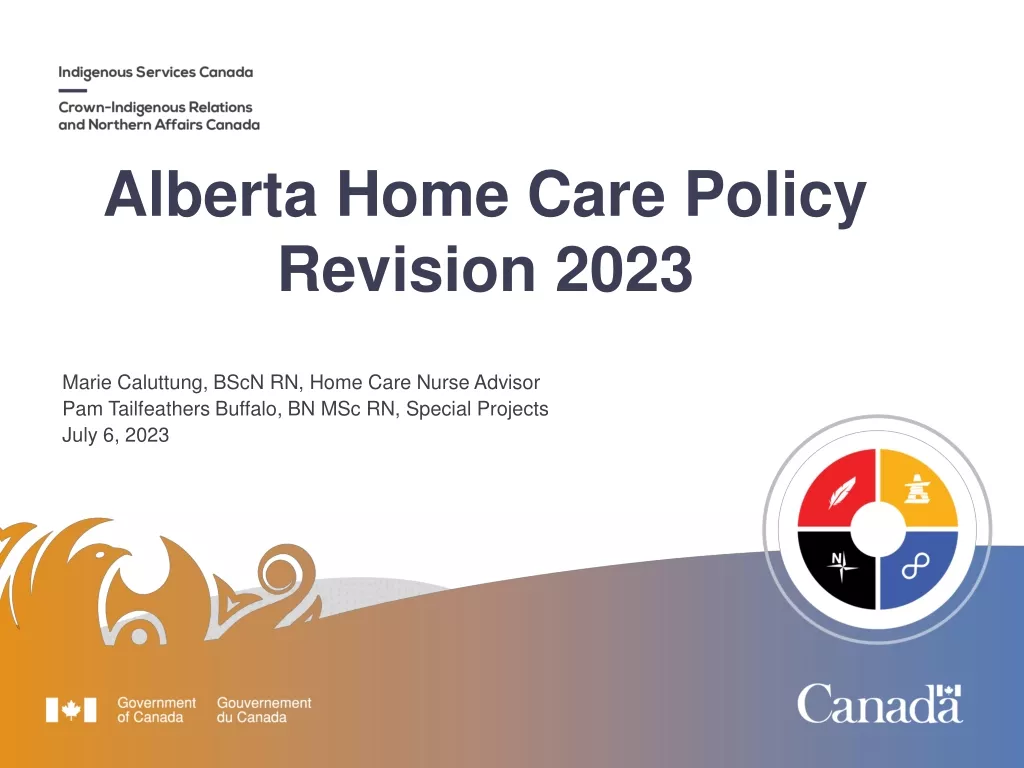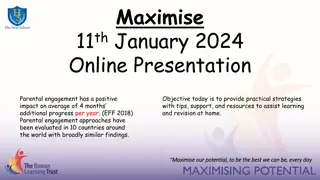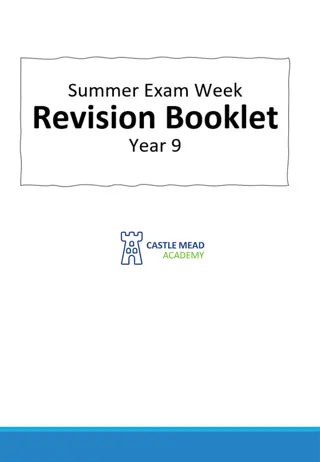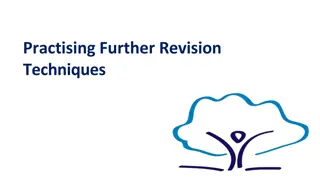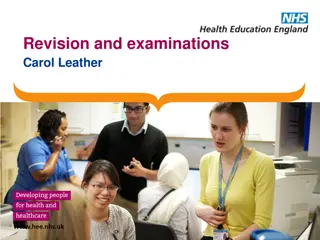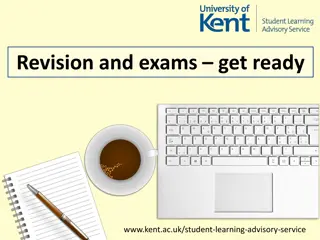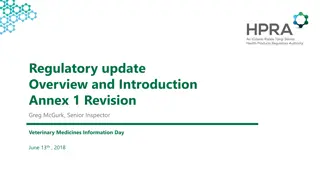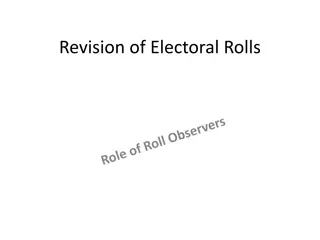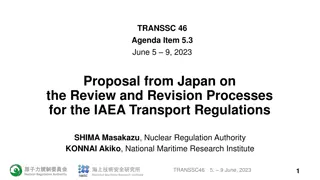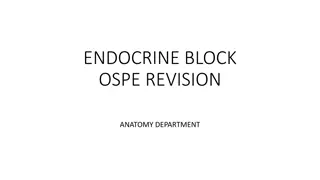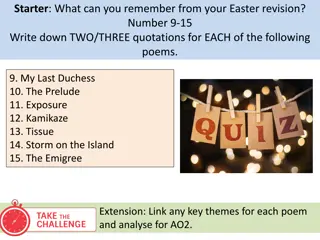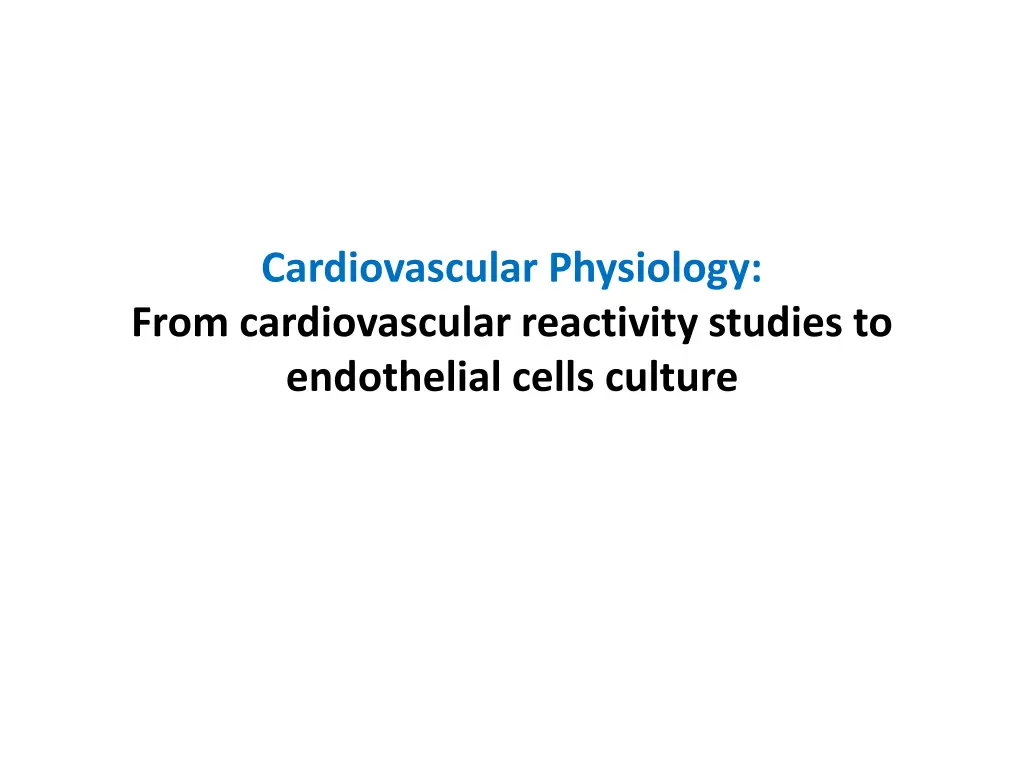
Exploring Cardiovascular Reactivity Studies and Endothelial Cells Culture
Discover the latest studies in cardiovascular reactivity, from exploring family history of hypertension to examining the effects of environmental factors like earthquakes. Delve into laboratory methods for assessing cardiovascular reactivity and the potential implications for pre-clinical cardiovascular disease. Uncover the ongoing research questions and themes in cardiovascular physiology, aiming to advance our understanding and impact future healthcare practices.
Download Presentation

Please find below an Image/Link to download the presentation.
The content on the website is provided AS IS for your information and personal use only. It may not be sold, licensed, or shared on other websites without obtaining consent from the author. If you encounter any issues during the download, it is possible that the publisher has removed the file from their server.
You are allowed to download the files provided on this website for personal or commercial use, subject to the condition that they are used lawfully. All files are the property of their respective owners.
The content on the website is provided AS IS for your information and personal use only. It may not be sold, licensed, or shared on other websites without obtaining consent from the author.
E N D
Presentation Transcript
Cardiovascular Physiology: From cardiovascular reactivity studies to endothelial cells culture
Goals To present the studies that have been done in the past ten years To explore next research questions in cardiovascular physiology
2006 : Cardiovascular reactivity in normo- tensive young adults with family history of hypertension
Cardiovascular reactivity is a set of changes in blood pressure, heart rate, and other hemodynamic parameters in response to a stimulus (Falkner, 1996).
Cardiovascular reactivity Pre-clinical cardiovascular disease state Structural and functional changes in cardiovascular system in clinically healthy individuals that if progress can lead to manifestations of hypertension, coronary heart failure, coronary artery disease, and stroke (Treiber et al., 2003).
Laboratory methods for assessing cardiovascular reactivity Controlled Short-term Mental test Physical test Arithmetic test Cold pressor Stroop color word conflict test Postural change Video game Isotonic exercise Interview Isometric exercise Reaction time
* FHoH * Without With (Jenie & Noor, 2010)
Cardiovascular reactivity to earthquake (Mutiara Medika, 2006, 9(1), p57-62) Yogyakarta Earthquake 2006
The theme of cardiovascular reactivity as one of topics of research is still going on. 2015 : Cardiovascular reactivity to mental test, cold pressor test, and postural changes in normotensive women who lives in area near the airport compared to normotensive women who lives remote from the airport (The correlation between CV reactivity and noisy)
2009: The role of the renin-angiotensin system in the development atherosclerosis in Wistar rats (an in vivo study on the effect of Captopril to the oxidative stress) Pathophysiology of atherosclerosis: chronic inflammation, thrombus formation Role of endothelial cells to inhibit thrombus formation; role of activated platelets
Endothelial cells as thromboregulator (Vinik et al., 2001) 12
2010: ROLE OF TESTOSTERONE IN PLATELET ADHESION AND AGGREGATION MEDIATED BY ENDOTHELIAL CELLS : an in vitro Study of cAMP Level in Platelets, Expression of COX-2, ER- , ICAM-1, and CD40 in Endothelial Cell Culture Exposed to High Glucose Umbilical cord collection Isolation of endothelial cells
Primary culture of HUVEC Cell harvest and cell counting Day 1 Day 3 Day 7
Exposure of testosterone and high glucose for 24 hours Subculture 24 wells microplate Subculture of HUVEC
Hasil dan Pembahasan 70 60 50 Agregasi trombosit maksimal (%) 40 30 GN 20 GT 10 0 T0 29.3 46.5 T1 25 43.9 T10 28.55 48.1 T100 29.15 37.45 GN GT Kelompok Gambar 4.5 Tes agregasi trombosit dimediasi endotel pasca terpapar testosteron dosis bertingkat dalam lingkungan glukosa normal atau glukosa tinggi (Jenie, et al., 2015)
Platelets activation: a series of changes in platelets morphology and phenotype, for platelets to become proadhesion, procoagulation, and prothrombosis. On the activated platelets, inside-to- outside and outside-to-inside signal occure.
2016: A preliminary study on platelet reactivity in normotensive subjects with a family history of hypertension, CVD-IA proceeding


